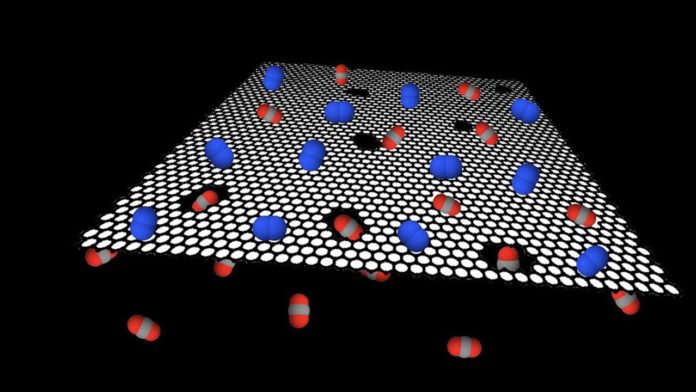Vast amount of carbon dioxide in the atmosphere is the main culprit for global warming. Scientists from various Institutes are trying to figure out the way to sequester waste carbon dioxide.
Currently, capturing carbon from power plants and industrial emissions is quite expensive as the emitted carbon-dioxide is in mixed form. It needs to be extracted from industrial emissions. For that extraction, additional processes need to be done that costs extra money.
Scientists have been trying to develop an energy-efficient carbon dioxide-filter, i.e., membrane, to extract carbon dioxide from the gas mix, which can then be either stored or converted into useful chemicals. However, the filter has its limitations: the fundamental properties of currently available materials limit current carbon dioxide filters’ performance.
Chemical engineers at EPFL have come up with a solution. They have developed a graphene filter for carbon capture that surpasses the efficiency of commercial capture technologies.
Fascinatingly, their filter is the thinnest in the world that can separate carbon dioxide from a mix of gases with efficiency and speed that surpasses most current filters.
Professor Kumar Varoon Agrawal at EPFL’s School of Basic Sciences (EPFL Valais Wallis) said, “Our approach was simple. We made carbon dioxide-sized holes in graphene, which allowed carbon dioxide to flow through while blocking other gases such as nitrogen, which are larger than carbon dioxide.”
The membranes that the EPFL scientists developed show more than ten-fold higher carbon dioxide permeance at 11,800 GPUs, while their separation factor stands at 22.5.
Agrawal said, “We estimate that this technology will drop the cost of carbon capture close to $30 per ton of carbon dioxide, in contrast to commercial processes where the cost is two-to-four times higher.”
Scientists are now working on scaling up the process by developing a pilot plant demonstrator to capture 10 kg carbon dioxide per day in a project funded by the Swiss government and Swiss industry.
Journal Reference:
- S. Huang, S. Li, L. F. Villalobos et al. Millisecond lattice gasification for high-density carbon dioxide- and O2-sieving nanopores in single-layer graphene. Science Advances 2021, 7, eabf0116, 24 February 2021. DOI: 10.1126/sciadv.abf0116
